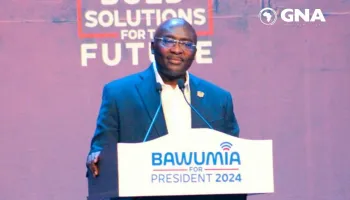
ABOUT eight million houses have been projected to be built in the country by 2050, to accommodate the growing population and clear the existing housing deficit, pegged at two million units.
By 2030, it is envisaged that 300,000 houses would be built annually, according to the Ghana Infrastructure Plan (GIP), a companion document of the country's 40-year long-term national development plan.
Mr Charles Boakye, team lead for the GIP and an engineer of the Institute for Infrastructure Development gave highlights of the plan at the 2nd National Development Forum in Accra on Thursday.
He was speaking on the topic "Modernising infrastructure for accelerated development: the Ghana Infrastructure Plan" at the forum organised by the National Development Planning Commission (NDPC).
The forum, attended by politicians, academics, professional associations, development partners and students, focused on non-partisan discourse on development issues and expectations for the country's future.
The GIP aims to chart a new vision and strategic direction for Ghana's infrastructure in a coordinated and integrated manner, and develop a financing plan for implementation to attain a high-income status within 40 years.
Under the Human Settlements and Housing, Mr Boakye said light and informal industrial estates such as Kokompe in Accra and Suame in Kumasi would be re-designed and upgraded to support industrial growth.
According to him, mining towns in the country such as Obuasi, Konongo and Tarkwa would also be redesigned and transformed into sustainable human settlements.
"Slums and dilapidated settlements will be phased out progressively under the new "Making slums history" programme, towards building sustainable, attractive and secure cities," he said.
He highlighted similar boost for health, education, tourism, water and sanitation, aviation, maritime and energy sectors to address existing challenges and others that would rear their heads due to the increasing population.
Ten other major infrastructure frameworks listed in the plan include energy, transport, water, human settlements and housing, social, civic and commercial and resource mobilisation and financing plan.
Others are human resource and skills planning, climate resilience, disaster risk reduction and environmental sustainability, construction industry development, results framework and ICT infrastructure.
The financing of the ambitious plans, he said would not be a burden on the Finance Ministry as modules such as land financing and value addition to resources, could be employed to shore up what the government could get from other sources.
"The good news is that to build our infrastructure, we have all the materials, we get cement from limestone, we get bitumen from oil, plastics from gas, and steel from iron ore... what we need to do is to add value to our resources. Without that we cannot finance the plan," he said.
Prof. Kwasi Kwafo Adarkwa, former Vice Chancellor of the Kwame Nkrumah University of Science and Technology, said the plan was laudable but needed sustainable finance and implementation plan to execute it.
Participants called for strong political will to see the plan through.
Read Full Story

















Facebook
Twitter
Pinterest
Instagram
Google+
YouTube
LinkedIn
RSS